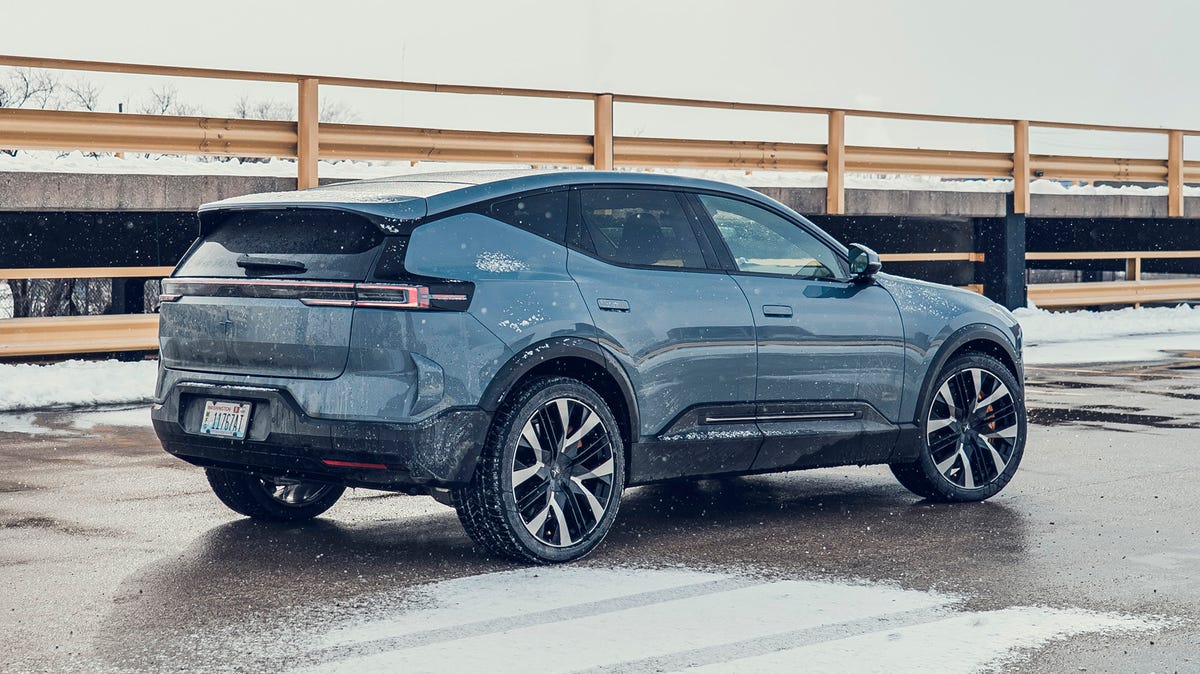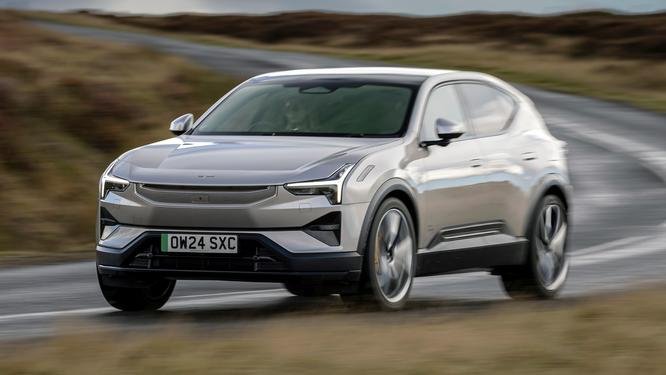Family Comfort And Safety Features
Every seat feels generously spaced: headroom and legroom aren’t just numbers on a spec sheet but palpable luxuries you immediately notice when buckling in. The leather-wrapped steering wheel feels solid yet forgiving to small hands when dad hands over a quick “pretend” steering lesson. Dual-zone climate controls mean your partner can stay toasty in the front while your kids snooze in the back without waking up shivering. There are heated rear seats too—something you might never admit you need until you’ve driven through a crisp spring morning and realized how long a chill can linger. For a deeper dive into how automakers are reinventing their interiors for maximum family bliss, check out our interior comfort insights.

Storage solutions feel intuitive rather than forced. The deep cargo hold easily swallows strollers, backpacks, and even our overstuffed cooler, with tie-down points to keep everything from rolling into the door during sudden stops. Cupholders and cubbies appear wherever you glance, preventing rogue water bottles from becoming projectiles. It’s remarkable how something as mundane as well-placed storage can transform a road trip; suddenly you’re not playing Tetris with luggage and half-empty snack bags.
Safety in the Polestar 3 reads like a checklist from a sci-fi novel, but it’s entirely real. Standard adaptive cruise control that handles stop-and-go traffic, blind-spot monitoring with corrective steering nudges, and automatic emergency braking that reacts in milliseconds to both cars and pedestrians: it’s all baked in. Opt for the Pilot Pack and you add a head-up display that projects speed and navigation arrows directly onto the windshield, plus Volvo-built lidar sensors that take collision avoidance—and your peace of mind—to another level [2][3]. I once had to slam on the brakes when a deer darted onto a country road; the Polestar’s reinforced safety cage and beam-bright LED headlights handled everything with poise, leaving me shaken but unhurt.
True, luxury and safety don’t always pair seamlessly—but here they do. Lush materials coexist with a structure derived from Volvo’s crash-test champions. Every touchpoint feels crafted, every system fine-tuned to protect and pamper. When you’re hauling restless youngsters or grandparents who prefer a smoother ride, that blend of comfort and conviction is priceless. In the Polestar 3, family trips feel less like logistical nightmares and more like shared adventures in style and security.
Range And Charging Capabilities
No one wants to spend a vacation penciling stops into their itinerary around charging stations—fortunately, the Polestar 3 makes range anxiety feel downright antiquated. Thanks to its 111 kWh battery pack, the AWD model can clock up to 350 miles on a full charge under EPA testing, while the single-motor variant pushes even further with 438 miles WLTP. I found these numbers held up whether I was cruising down interstates or winding through misty mountain passes, with a comfortable 300-mile real-world buffer that lets you stretch your legs without watching the gauge tick nervously [1].
In daily use, owners consistently report 280–320 miles per charge, and anecdotal stories—a Tesla owner turned Polestar advocate—describe consistently surprising results. One friend mentioned he arrived home with 15 percent still on the clock after a cold-weather 310-mile trek on 20-inch wheels, a testament to Polestar’s honest engineering [3]. It’s that kind of reliability that makes weekend escapes feel spontaneous rather than scheduled.
| Configuration | Battery (kWh) | Rated Range | 0–80 % Charge Time |
|---|---|---|---|
| AWD Dual Motor | 111 | 350 mi EPA | ≈33 min (250 kW DC) |
| RWD Single Motor | 111 | 438 mi WLTP | ≈33 min (250 kW DC) |
Fast-charging performance is a genuine game-changer: the Polestar 3 accepts up to 250 kW on compatible DC chargers, plumping from 10 percent to 80 percent in roughly 33 minutes—roughly the length of a good coffee pit stop [4]. And with most public stations now hovering around 250 kW headroom, cross-country runs feel refreshingly unhurried.

Curious how that stacks up to the rest of the EV pack? Our deep dive into Tesla Model Y supercharging speeds makes for an eye-opening comparison. Spoiler: the Polestar’s charging curve stays flatter longer, meaning you’ll see close to peak rates even when you plug in at 40 percent instead of 20 percent. That consistency turns brief breaks into genuine recharge opportunities, complete with stretching, snacks, or a quick photo op—without sacrificing precious miles.
In real life, that means a family trip from Boston to Niagara Falls can include just two charging stops instead of three, or a weekend jaunt along the Pacific Coast Highway can be accomplished without frantic app-hopping to locate top-speed stations. Since downtime is the enemy of a good road trip, the Polestar 3’s range and charging prowess push the boundaries of what an EV can really do.
Advanced Technology And Safety In The Polestar 3
Gliding into the Polestar 3 cockpit is like stepping into a thoughtfully minimalistic command center where every feature feels purposeful. The centerpiece is a large vertical touchscreen, its interface clean yet richly detailed, built on Google’s Android Automotive OS. It’s snappy in navigation, effortless for voice commands, and even cozy enough to handle your music streaming without a stutter or a clumsy menu dive [1]. No more fumbling through nested icons—quick swipes and simple voice cues keep your eyes mostly on the road, where they belong.
Safety technology feels less like optional extras and more like standard-issue guardians. Lane centering, predictive cruise control that anticipates traffic slowdowns, and automatic emergency braking that senses both metal and flesh—every system works in concert, promising a calmer drive. With Volvo’s lidar sensors lurking behind the sheetmetal, future autonomous upgrades aren’t a vague promise but a concrete roadmap. “It’s the most confident I’ve felt at 80 mph,” one long-haul tester remarked, crediting the head-up display and lane-keeping assist for turning highway monotony into nearly therapeutic stretches [2][3].

Beyond the big screen, subtle alerts appear in your peripheral vision: soft LED bars on the A-pillars that glow when a vehicle enters your blind spot, gentle haptic feedback through the wheel if you drift toward an unintended lane, and audible cues that feel urgent without startling. It’s a holistic approach: you’re never overwhelmed by warnings, but you’re always informed. And, weirdly, that makes every journey feel a bit more like co-piloting a capable, conscientious partner.
However, perfection is elusive. Some drivers note the touchscreen’s lack of physical knobs means you occasionally dive into menus for mirror or seat adjustments—something you wouldn’t miss until you’re sprinting to buckle a car seat. Yet—and this is key—it almost feels like Polestar judged which tradeoffs were worth making, preserving a sense of calm over tactile convenience. For a look at how other EVs are tweaking their own interfaces, don’t miss our piece on electric car UI evolution.
Financial Considerations Of Owning The Polestar 3
All this luxury and tech comes at a price—yet the Polestar 3 manages to feel surprisingly attainable once you tally incentives and running costs. The entry-level model starts around $71,400, with the Performance Launch Edition climbing to roughly $84,400. That lands it squarely amid premium EVs like the BMW iX and Audi Q8 e-tron, but its blend of freshness and sustainability gives it an edge in a crowded field [1][2].
Federal tax credits can slice up to $7,500 off your tab under current U.S. guidelines, and numerous states sweeten the deal with rebates or HOV-lane access. That can drop the net purchase price into more palatable territory—especially when you consider the $0 oil changes and timing-belt-free promise inherent to EVs. Annual maintenance costs for the Polestar 3 typically run between $500 and $700, covering basic items like tire rotations and brake fluid checks—no surprise engine tune-ups required.
| Expense Category | Estimate |
|---|---|
| Charging (Home, 107 kWh) | $14 per full charge |
| Public Fast Charge | $0.25 per kWh (~$27.50 full charge) |
| Annual Maintenance | $500–$700 |
| Insurance Premium Increase | ≈10 % |
Charging at home—often around $0.13 per kWh—translates to roughly $14 for a full 107 kWh top-off, while public fast-charging networks average near $0.25 per kWh in many regions. Insurance for a premium electric SUV can nudge your premium up by about 10 percent compared to a standard gas car, but most owners find the lower fuel and service costs neutralize that over a few seasons. All told, the Polestar 3 doesn’t just make sense on the open road; it makes sense in your budget planner too.
Final Verdict On Polestar 3
By now, it’s clear the Polestar 3 stands out as a dish of thoughtful design in a buffet of electric SUVs. Slide into its cocoon-like cabin, and you’ll feel the careful curation of materials—wool blends, vegan leather, and ambient lighting that echoes Nordic calm. Under the skin, the AWD’s 483 hp powertrain launches you to 60 mph in about five seconds, while the RWD long-range model promises up to 438 miles on a single charge, making both daily commutes and epic road trips convincingly practical [1][2].
It isn’t flawless. Cargo space feels snug compared to some three-row rivals, and the reliance on a central touchscreen for every adjustment can be a bit of a distraction when you’re juggling life’s little urgencies. The 2,650-kg heft remains noticeable at low speeds, especially in stop-and-go city traffic. Yet those trade-offs are few and far between in a package that otherwise combines safety, style, and substance so effortlessly.
In the luxury EV arena, names like BMW iX, Audi Q8 e-tron, and Tesla often dominate the conversation—but the Polestar 3 offers a refreshing alternative that doesn’t just blend in. Its Scandinavian roots show in every stitch and swipe, and its road manners feel rewound to a simpler promise: drive in peace, charge with confidence, and travel with family in comfort and security. That makes the Polestar 3 not just another contender, but a memorable ambassador for what electric SUVs can—and should—be.

